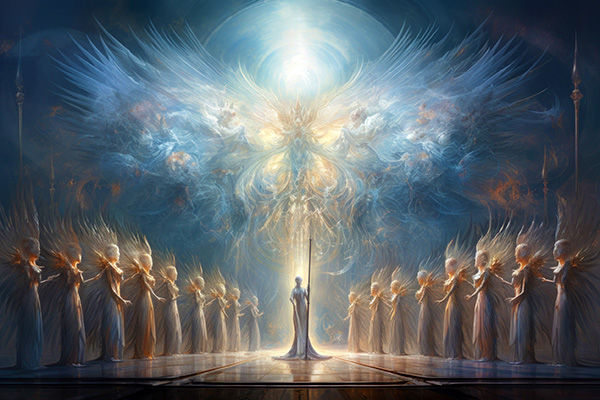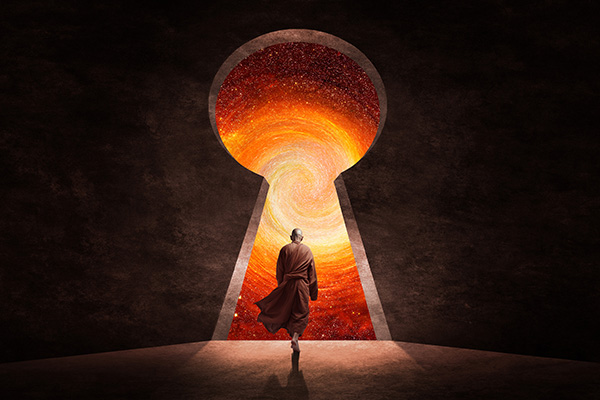Uncover the Delight of Being in Your Zone
 A former colleague I hadn’t spoken to in ages recently reached out to me. She wanted to know how I was faring.
A former colleague I hadn’t spoken to in ages recently reached out to me. She wanted to know how I was faring.
“I’m thriving!” I replied. “Working remotely, engaged in my passion, and surrounded by my diverse array of companions.”
Post-conversation, I began to reflect on my words. The expression “in my element” isn’t something I frequently use, prompting a moment of contemplation regarding its true significance. What does it mean to be in one’s element?
The phrase “being in your element” has ancient mystical origins. Historically, the notion of “elements” referred to the four classical elements — earth, water, air, and fire — thought to compose the universe. Each element was believed to possess its own traits, with individuals metaphorically linked to the element aligning with their character or environment.
For instance, to say someone is “in their element” likens them to a fish swimming in water — ideally adapted to their surroundings. Over time, this literal interpretation evolved into the figurative meaning we understand today: feeling at ease, confident, and successful in a scenario that aligns with one’s abilities or inclinations.
As I contemplated my present circumstances, I recognized that I had deliberately crafted my vision and manifested precisely the work environment I desired. This wasn’t a coincidence — it was the result of focused intention and alignment with my true purpose.
Previously, I was entrenched in the corporate sphere and faced its pressures firsthand. I endured long, arduous hours under the dominion of unethical supervisors who manipulated the schedules to disguise unfairness.
It’s your place in the world; it’s your life. Go ahead and do all you can with it, and create the life you wish to lead ~ Mae Jemison
These work experiences were draining to the soul, physically laborious, and contrary to my deeper sense of purpose. This period of my life was nowhere near “being in my element.”
These hardships led me to deeply empathize with my clients’ struggles. Many individuals I consult are overwhelmed with work-related stress, and many young people in particular are suffering from autoimmune issues stemming from their high-pressure lifestyles. They cannot be in their element while ensnared in such exhausting situations.
When I connect with these clients, I motivate them to establish clear intentions for transformation, envision their ideal settings, and have faith in their capability to manifest a life in harmony with their passions and well-being.
This understanding didn’t merely stem from observation — it arose from my own journey of metamorphosis.
Nearly thirty years ago, I embarked on a significant transformation in my life. I entered the realm of psychic reading, energy healing, herbalism, and aromatherapy.
At that point, I was operating out of a shared office space with my ex-boyfriend, managing a small herbal shop along the breathtaking coast of KwaZulu-Natal, South Africa. Yet my aspirations were grander — I dreamed of practicing aromatherapy while gazing at the ocean, observing dolphins frolicking in the surf.
The chapter shifted when my relationship concluded, and my ex and I decided to pursue separate living and working arrangements.
There is no passion to be found playing small – in settling for a life that is less than the one you are capable of living ~ Nelson Mandela
<pOne day, while discussing my quest for a new place with a client, she informed me that her parents were relocating to town to assist with the family business. Their beautiful apartment overlooking the ocean was soon to be available for rent at a very reasonable rate.
It felt as if the universe had conspired to perfectly align everything. Was it mere luck? I don’t think so. In retrospect, I believe that my persistent vision — envisioning myself through a window, watching dolphins while practicing healing — helped create the synchronistic events that manifested this reality.
And thus, the dream materialized. Every time a pod of dolphins passed by, I took a moment to observe them while listening to calming recordings of dolphin and whale calls during my healing sessions. It served as a profound reminder that when we align with our deepest wishes, the universe responds in kind.
So, what does it truly mean to be in your element? I would characterize it as a profound connection to what nurtures your soul — something that resonates with your core identity, purpose, and well-being.
It involves merging passion and skill in a manner that results in both fulfillment and success. It’s about feeling entirely at home in your pursuits, losing track of time because you’re engaged in something that feels innate, effortless, and profoundly rewarding.
Sometimes uncovering what we cherish necessitates first encountering what we don’t. It’s frequently through adversity and misalignment that we gain clarity about what genuinely brings us light. This knowledge, born from experience, fosters the confidence to chase a life that mirrors our most authentic selves.
If you feel that there’s something out there that you’re meant to be doing, if you have a passion for it, then stop wishing and just pursue it ~ Wanda Sykes
If you seek to uncover your element, begin by contemplating these questions:
✵ What energizes me? When do I feel the most vibrant, fulfilled, or “in flow”?
✵ What came naturally to me as a child, and why did I abandon it?
✵ What childhood dreams or passions have I put aside but still feel attracted to?
✵ What activities cause me to lose track of time because I enjoy them immensely?
✵ What comes easily to me that may pose challenges for others?
✵ What skills or talents do others frequently compliment or seek my guidance on?
✵ If financial constraints and responsibilities were non-existent, how would I choose to spend my time?
✵ What subjects or issues do I inherently gravitate towards during discussions, readings, or media?
✵ What social issues deeply resonate with or motivate me to create change?
✵ What values or principles do I uphold, regardless of circumstances?
✵ When have I felt most proud of myself, and what was I engaged in at that moment?
✵ What legacy do I aspire to leave — how do I wish to be remembered?
If you can’t determine your purpose, identify your passion. For your passion will lead you directly into your purpose ~ T.D. Jakes
Many individuals describe being in their element as tapping into a universal flow — a state of awareness where creativity, inspiration, and joy seem to materialize effortlessly. When we exist in this state of spiritual presence, time feels irrelevant, and we simply immerse ourselves in our passions. There’s an authenticity, an essence of being entirely ourselves without limitations.
It’s easy to believe that these moments of alignment are infrequent or reserved for the fortunate, but the reality is that we each possess the capability to attain and sustain this state of being. The crucial factor is to have faith that we are able to change at any age, in any situation. We are never too old, too entrenched, or too far gone to reinvent ourselves. Every day presents an opportunity for renewal.
If you currently don’t feel “in your element,” start setting the intention for it. Visualize the surroundings, the work, and the connections that would provide you with maximum fulfillment. Concentrate on the sensation of being in alignment and trust that the appropriate conditions will gradually manifest.
It may not materialize immediately, but as you refine your vision and take actionable steps, synchronicities will emerge — just as they did for me when I discovered the perfect ocean-view apartment.
Remember, life isn’t about accepting a course that drains and discourages you; it’s about embracing the journey that uplifts and invigorates you. You hold the power to design a life that reflects your authentic passions and purpose. The Universe is always prepared to align with the intentions you put forth.
So, take that leap. Tune into your desires. Unearth your inner truth. Follow the calling of your soul. Step courageously into your true element, where you are destined to shine!
|
Shani is a certified practitioner in Reiki, aromatherapy, reflexology, body spin, and animal telepathy who received psychic development training at the Arthur Findlay College of Psychic Research in England. As a published author, her writings and predictions have appeared in numerous esteemed magazines and on psychic platforms, and she has provided readings for many renowned individuals, including heads of state in Africa. Known for her empathy, clients find it easy to connect with her. Every month, she participates in a psychic circle where the insights from Spirit continue to amaze all present. Though she originated in London, Shani has traveled extensively and studied the art of African Mysticism, incorporating her unique approach for those seeking her remarkable abilities. From her travels, she has learned that there is a prevalent yearning among clients for a connection to the essence of their being. Experience a reading with Shani at PsychicAccess.com. |
Discover the Happiness of Being in Your Element
Have you ever observed how some individuals seem to effortlessly flourish in specific aspects of their lives? They exude self-assurance and passion, with their enthusiasm being infectious. These individuals have located their “element,” a notion popularized by Sir Ken Robinson, an esteemed educator and author. Being in your element signifies engaging in pursuits that align with your inherent talents, passions, and interests. It represents a state of being where you feel most alive, fulfilled, and happy.
Uncovering your element transcends mere hobbies or careers; it involves discovering your authentic self and living a life that resonates with your genuine desires. When you are in your element, time feels like it flies, and you experience a deep sense of fulfillment and purpose. It’s a state of flow where your skills and passions coalesce, enabling you to realize your full potential.
So, how can you uncover the happiness of being in your element? Here are several steps to assist you on this transformative journey:
1. Contemplate your passions and interests: Dedicate time to reflect on the activities that bring you joy and allow you to lose track of time. What are the things you love to do? What subjects or themes captivate you? Identifying your passions and interests is the initial step towards finding your element.
2. Identify your strengths and talents: Everyone possesses unique strengths and abilities. Reflect on the skills at which you excel effortlessly. What are you naturally skilled at? These strengths may range from problem-solving, creativity, leadership, empathy, or analytical thinking. Acknowledging your strengths will aid you in aligning them with your passions.
3. Experiment and explore: After pinpointing your passions and strengths, begin exploring various paths that enable you to engage with them. Try new hobbies, sign up for courses, or join communities related to your interests. This exploration will provide clarity and insight into what resonates with you.
4. Embrace challenges and setbacks: The search for your element may not always be straightforward. Embrace challenges and setbacks as opportunities for growth and learning. Remember, setbacks are not failures, but rather steps toward discovering your true calling.
5. Seek guidance and support: Surround yourself with like-minded individuals who can support and inspire you throughout your journey. Look for mentorship or coaching to help guide you through the process of discovering your element. Their insights and experiences can offer valuable support and encouragement.
6. Trust your intuition: As you explore diverse paths, rely on your intuition for guidance. Pay attention to how certain activities make you feel. If something feels right and brings you joy, it’s likely a sign that you are inching closer to your element.
7. Embrace lifelong learning: Finding your element is not a one-time endeavor; it’s an ongoing journey. Embrace lifelong learning and continuously seek opportunities to enhance your knowledge and skills. This will aid your evolution and growth within your element.
Discovering the happiness of being in your element is a deeply personal and transformative journey. It requires self-reflection, courage, and a willingness to step outside your comfort zone. However, the rewards are immeasurable. When you are in your element, you exude joy, inspire those around you, and make a significant impact on the world. So, begin this journey of self-discovery, and unlock the happiness of being in your element. Continue reading














